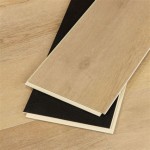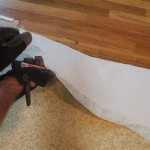Underlayment hardwood flooring is a great way to make sure your flooring is installed correctly and looks great for years to come. Installing an underlayment will provide stability and help prevent moisture from seeping through the floor and damaging the hardwood. In this article, we’ll discuss the importance of installing an underlayment, the different types available, and tips for ensuring a successful installation.
What is Underlayment Hardwood Flooring?
Underlayment hardwood flooring is an extra layer of protection that is placed between the subfloor and the hardwood. It helps to protect the floor from moisture, sound, and temperature fluctuations. It also provides a cushion for the hardwood, helping to make it more comfortable to walk on. The type of underlayment you choose will depend on the type of hardwood flooring you are installing.
Types of Underlayment Hardwood Flooring
There are several different types of underlayments available for hardwood flooring. Each type has its own advantages and disadvantages, so it’s important to consider all of your options before making a decision. The most common types of underlayment are foam, felt, and cork.
Foam Underlayment
Foam underlayment is a popular choice because it is easy to install, lightweight, and relatively inexpensive. It also provides a cushion to protect the hardwood floor from impact damage and sound. The downside is that foam can compress over time, making it less effective at providing cushioning and insulation.
Felt Underlayment
Felt underlayment is thicker and denser than foam, making it more durable and providing more cushioning. It is also more expensive than foam, but it is better at providing insulation and preventing sound from traveling between floors. It can also be used with radiant heat systems.
Cork Underlayment
Cork underlayment is made from natural cork, and it is the most expensive type of underlayment. It is also the most effective at providing insulation, soundproofing, and cushioning. However, it is also the most difficult to install and can be susceptible to mold and mildew.
Tips for Installing Underlayment Hardwood Flooring
Installing underlayment is an important step in the hardwood flooring installation process. Here are some tips to ensure a successful installation:
- Read the manufacturer’s instructions and follow them carefully.
- Test the underlayment for moisture before installation.
- Use a vapor barrier to protect against moisture.
- When installing foam underlayment, use a foam adhesive to secure it in place.
- When installing felt underlayment, use a stapler or adhesive to secure it.
- When installing cork underlayment, use a heavy-duty adhesive to ensure a secure bond.
Conclusion
Underlayment hardwood flooring is an important part of the hardwood installation process. It provides cushioning, insulation, and soundproofing to protect the hardwood flooring from damage and wear. Installing an underlayment correctly is essential, so be sure to read the manufacturer’s instructions and follow the tips outlined in this article to ensure a successful installation.




/laying-laminate-flooring-5c36643946e0fb0001102b5b.jpg)





:max_bytes(150000):strip_icc()/hardwood--oak--floor-172261142-5a382e14ec2f640037fe9f90.jpg)




Related Posts








